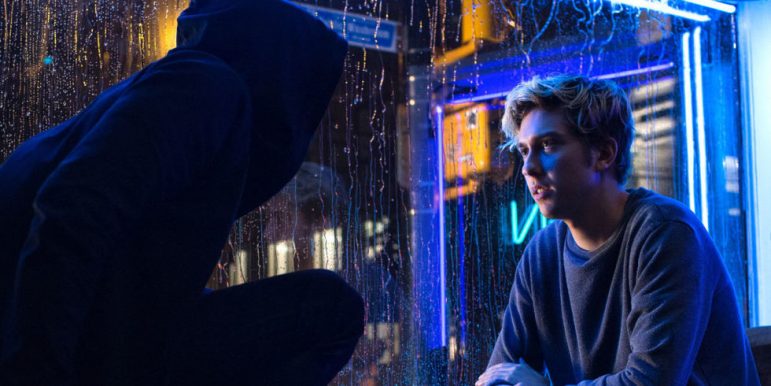

Nat Wolff (“Paper Towns”) plays the protagonist Light Turner — the brooding, intelligent outcast. On a rainy day at his Seattle high school, Light picks up the Death Note dropped from the sky by the spiny death god Ryuk, portrayed by Willem Dafoe (“Spider-Man”).
His love interest, cheerleader Mia Sutton, is played by Margaret Qualley (“The Leftovers”). After Light quickly puts a lot of trust into Mia by revealing to her the power of the Death Note, the pair begins killing criminals under the belief that the work they are doing will “solve all crime.” They soon begin claiming responsibility for more than 400 deaths under the pseudonym “Kira.”
After releasing the cast list, Wingard and the producers of the film were quickly criticized for “whitewashing” the characters and the story itself, as the adaptation takes place in Seattle and stars a predominantly white cast.
The team’s decision to cast Nat Wolff and Margaret Qualley as two of the leads — originally Japanese in the manga and anime — received a negative response from the public. Moreover, the changing of names from Light Yagami to Light Turner and Misa Amane to Mia Sutton for the American film angered dedicated fans.
Having greater representation in the media suggests to the audience that people of color are just as valuable and important in storytelling. Such a simple change in casting, when deemed necessary, is empowering and essential for communities who have grown up rarely seeing themselves on the silver screen.
In other cases, however, adaptations of works made abroad fall victim to Westernization. Though the two ideas seem synonymous, a fine line does exist between the act of “whitewashing” a film and “Americanizing” a series.
Though “Death Note” is seen as another example of “whitewashing,” some of Wingard’s decisions in telling the story were understandable, as he has explicitly stated that he tried to recreate “Death Note” in an American context. In fact, he has stated that his version isn’t meant to completely reflect the original source material, and has even said in an interview with The Hollywood Reporter that the creators of the original series loved what he had done with their story.
Although he offers a new story for fans of the manga, Wingard sacrifices many intellectual aspects of the original story to create a movie that attempts to please or excite an American audience. The original series focuses heavily on the battle between light and dark forces in human nature, but most of those internal conflicts relating to morality and justice seem absent from the Netflix version.
Such aspects that made “Death Note” popular are unfortunately lost in Wingard’s process of “Americanizing” the story. Because of the overwhelming amount of gore, action-packed scenes and romance, Wingard sacrifices the intellectual depth that makes the original series interesting.
His use of fast paced chase scenes and bloody carnage, which victims of the Death Note experience, ultimately help create a story that gets the audience’s heart racing. Moreover, the romantic plot between Light and Mia that drives much of the film may upset fans of the original series, but may also excite audiences that enjoy both romance and dramatic plot twists.
Additionally, stellar performances from Willem Dafoe and Lakeith Stanfield (“Get Out”), who plays the young detective “L,” also add dimension and a dose of healthy madness to the movie. Dafoe portrays the death god Ryuk in a way that respects the original series — his chilling, almost terrifying laugh ridicules Light’s actions throughout the film. Meanwhile, Stanfield’s slow but evident descent into inner turmoil over the case of the mysterious murders helps lend a sense of frustration towards Light, who is able to get away with his deadly actions throughout the movie.
Though the 2017 adaptation of “Death Note” may not please fans of the original series with its lack of exploration of moral, intellectual themes, Wingard and his team have created a story that excites fans of thrilling action-packed movies with the help of Hollywood gore and characters driven by madness.





